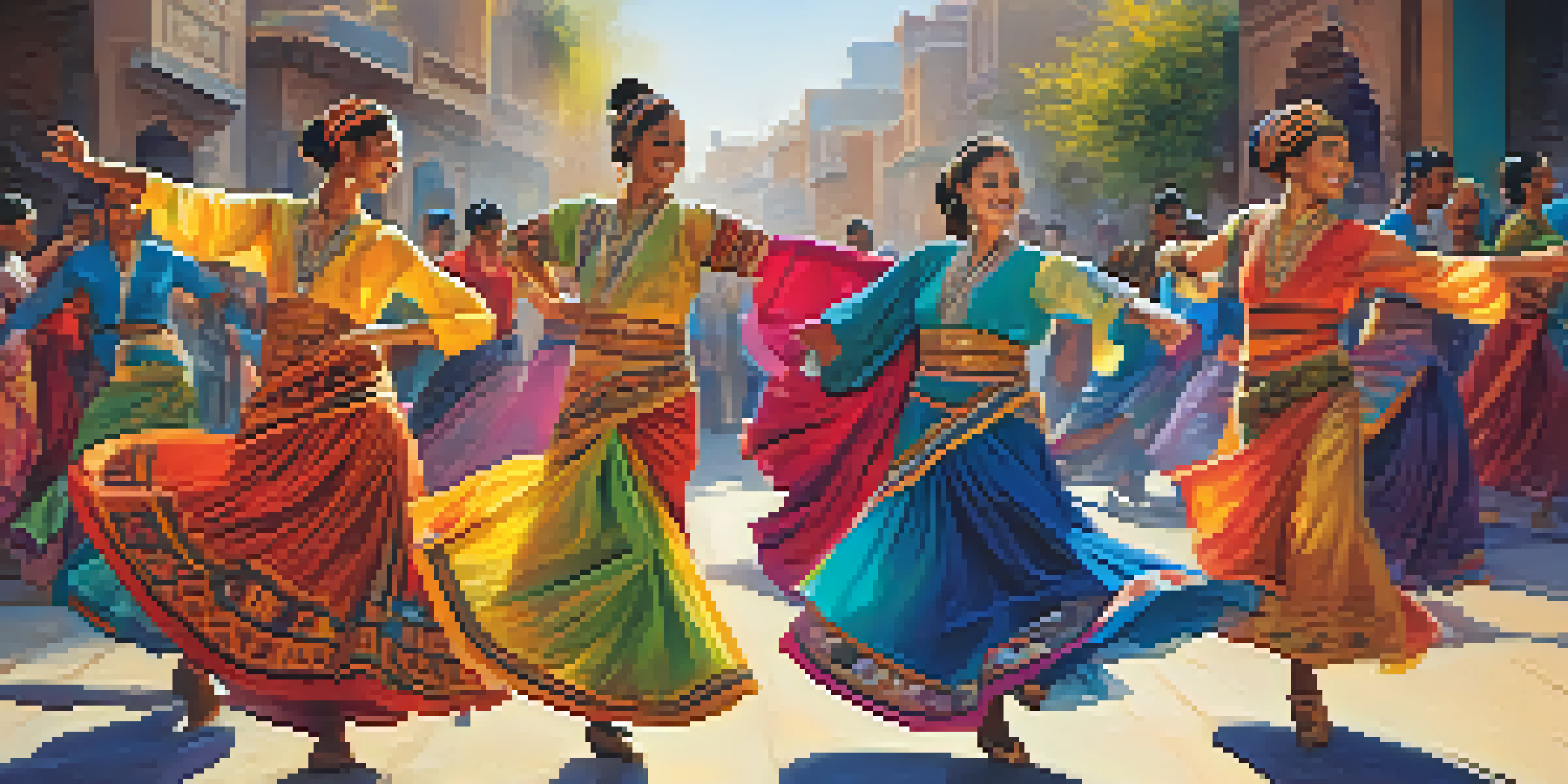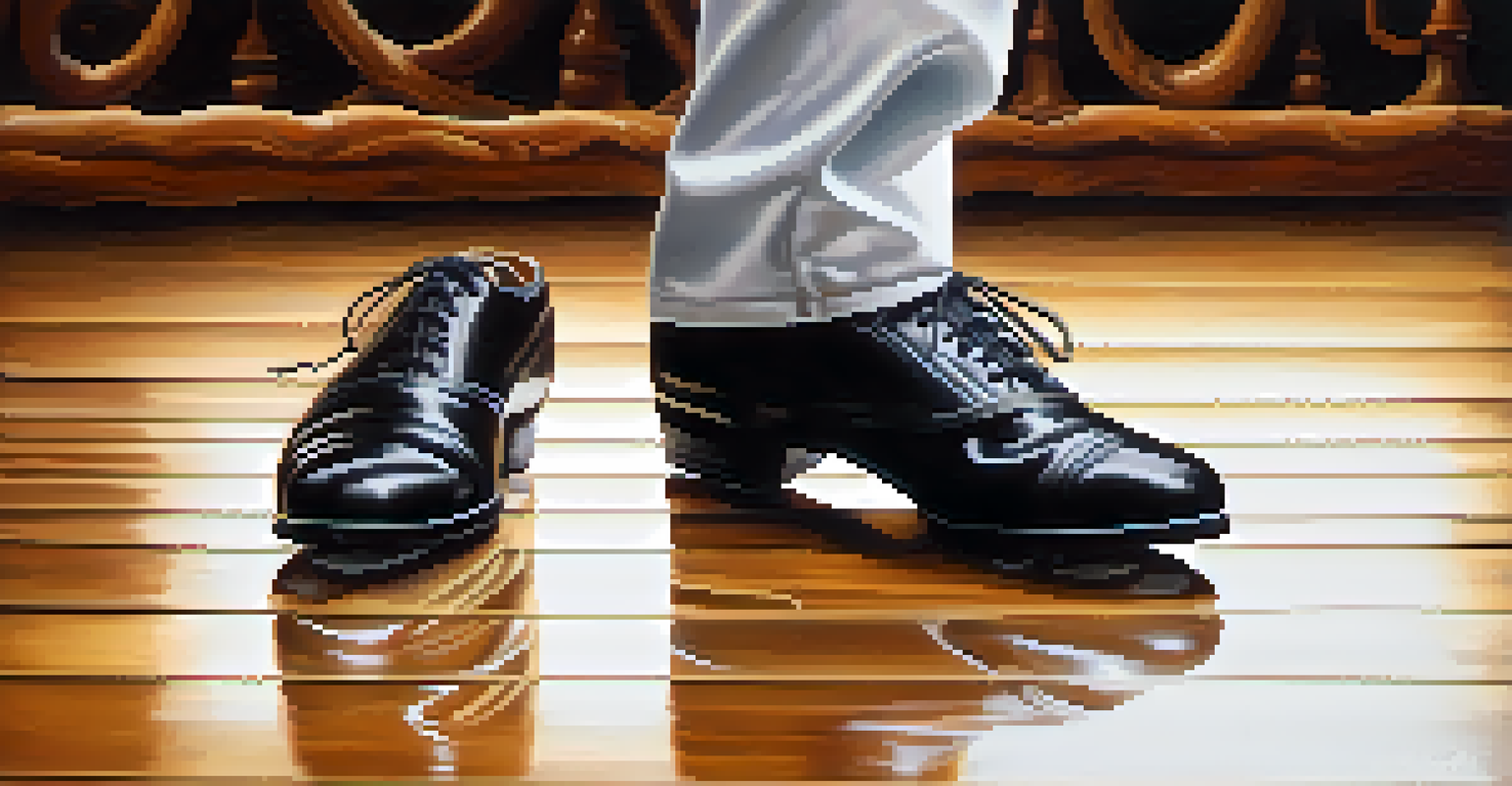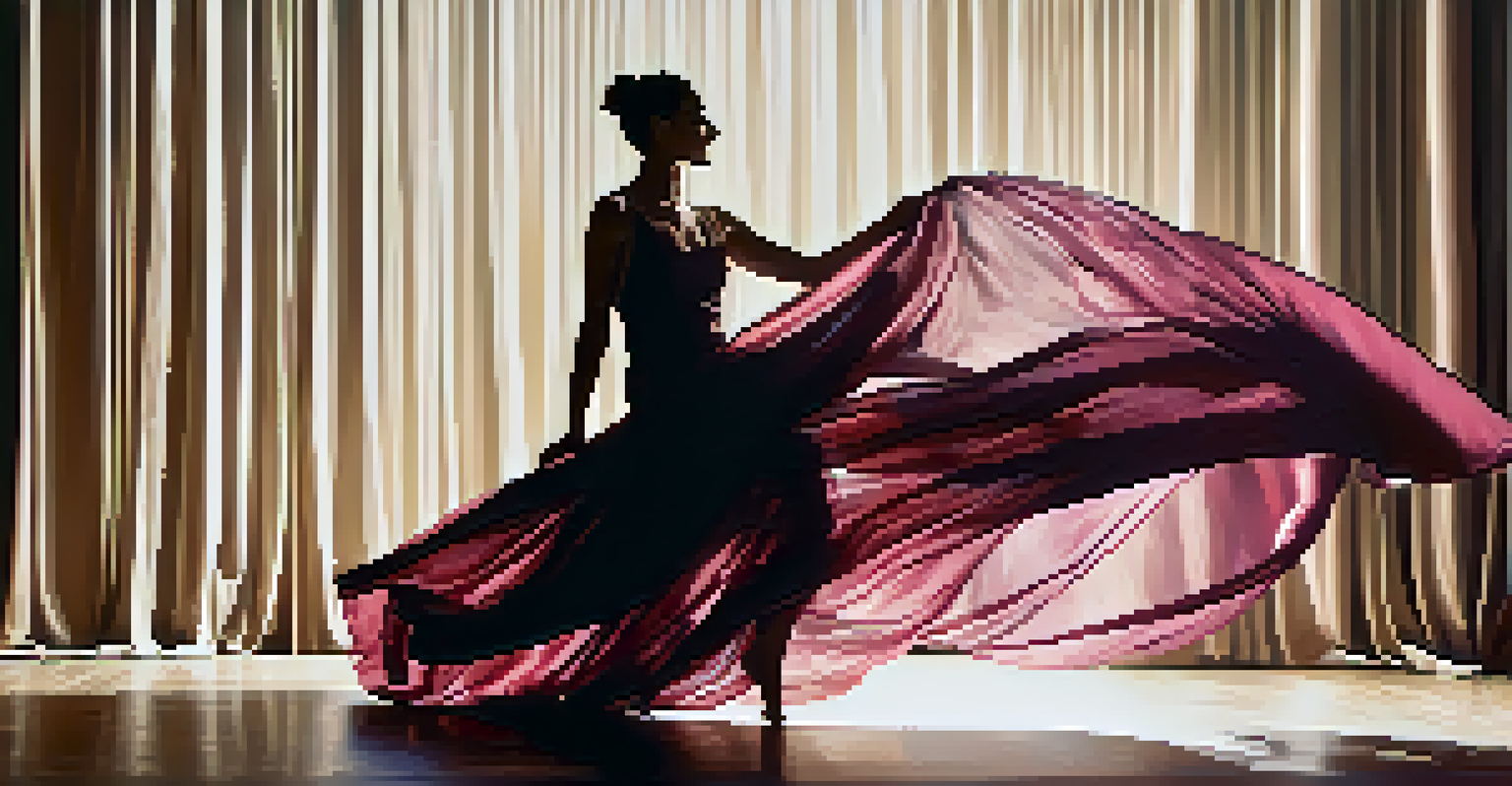The Impact of Immigration on American Dance Styles Development

The Roots of American Dance: A Cultural Melting Pot
American dance styles are a vibrant tapestry woven from various cultural threads. Each wave of immigrants has brought unique rhythms, movements, and traditions that have enriched the dance scene. For instance, African slaves introduced powerful, expressive dance forms that laid the groundwork for many contemporary styles.
Dance is the hidden language of the soul.
As immigrants from Europe, Asia, and Latin America arrived, they infused their dance traditions into American culture. The polka, tango, and salsa are just a few examples of how these diverse influences created new genres. This blending of styles not only reflects the diversity of the American population but also fosters a spirit of innovation in dance.
Ultimately, the evolution of American dance can be traced back to this rich cultural interchange. Each new immigrant group has added their own flair, creating a dynamic and ever-evolving dance landscape that continues to inspire artists today.
African Influences: The Heartbeat of American Dance
The impact of African cultures on American dance is profound and far-reaching. From the exuberance of African tribal dances to the rhythmic complexity of tap and jazz, these influences are undeniable. African American dance forms often emphasize community and storytelling, which resonate deeply in the American dance lexicon.

For example, jazz dance, which emerged in the early 20th century, showcases the improvisational spirit rooted in African traditions. Dancers often incorporate fluid movements and syncopated rhythms that reflect both individuality and collective expression. This improvisational element is a hallmark of many American dance styles, making them distinctively expressive.
Cultural Diversity Shapes American Dance
American dance is a rich blend of various cultural influences, with each immigrant group contributing unique rhythms and movements.
Moreover, the legacy of African dance can be seen in contemporary styles such as hip-hop, which originated in urban communities. Hip-hop blends various influences, including breakdancing and street dance, showcasing the ongoing evolution of African-inspired movements and their critical role in shaping American dance.
European Contributions: Elegance and Technique
European immigrants have also played a significant role in the development of American dance forms. Ballet, which originated in the courts of Italy and France, found a new home in America, influencing both technique and aesthetic. The incorporation of ballet techniques into various dance styles has elevated the overall artistry of American dance.
Dancing is creating a sculpture that is visible only for a moment.
As European immigrants settled in the United States, they brought traditional folk dances that showcased their cultural backgrounds. These dances, such as the waltz and the polka, have been adapted and integrated into American social dance culture. They not only provided entertainment but also served as a means of cultural preservation.
The blend of European elegance with African rhythms and movements has created a unique American dance style that thrives on diversity. This fusion is evident in Broadway performances and dance competitions, where classical techniques meet contemporary expression, showcasing the rich heritage of American dance.
Latino Influences: Passion and Energy in Dance
Latino cultures have made a significant impact on American dance, infusing it with passion and vivacity. Styles like salsa, merengue, and bachata have not only gained popularity but have become staples in American social dance scenes. The rhythmic beats of Latin music compel dancers to express themselves with energy and joy.
The emergence of salsa dance in the 1960s, for example, illustrates how cultural exchanges create new forms. Originating from Cuban and Puerto Rican influences, salsa combines elements of jazz and swing, resulting in a vibrant dance that resonates with many. This style highlights the beauty of cross-cultural collaboration in the evolution of American dance.
Dance as a Voice for Social Change
Throughout history, dance has served as a powerful medium for expressing social issues and identity, particularly among immigrant communities.
Moreover, Latino dance influences are evident in contemporary performances, where artists blend traditional movements with modern interpretations. This ongoing dialogue between heritage and innovation ensures that American dance continues to evolve, embracing new influences while celebrating its roots.
Asian Contributions: Grace and Complexity in Movement
Asian immigrants have also made notable contributions to American dance, introducing forms that emphasize grace and complexity. Traditional dances from China, Japan, and India, for instance, have inspired various American dance styles. The incorporation of these techniques adds depth and diversity to the overall dance landscape.
Ballet and modern dance have especially benefited from Asian influences. The fluid movements and storytelling found in Asian dance traditions have enriched choreographic practices in the U.S. This cross-pollination of styles encourages dancers to explore new techniques and expressions.
Furthermore, the rise of contemporary dance has allowed for a fusion of cultural influences, where Asian styles can be creatively integrated. This blending not only showcases the richness of American dance but also fosters a greater understanding and appreciation of diverse cultural heritages.
Dance as a Reflection of Social Change and Identity
Dance has always been a powerful medium for expressing social change and identity, especially in the context of immigration. As various immigrant groups settled in America, they often used dance to convey their experiences, struggles, and triumphs. This artistic expression not only preserves cultural heritage but also fosters community and solidarity.
For instance, the Civil Rights Movement saw dance emerge as a form of protest and empowerment. African American dancers utilized their art to highlight social injustices and advocate for equality. This intersection of dance and activism illustrates how immigrant communities have shaped American dance into a platform for change.
Future of Dance Embraces Global Influences
The evolution of American dance continues as new generations incorporate global styles, fostering innovation and inclusivity.
Moreover, dance styles have evolved to reflect the broader societal shifts, such as the LGBTQ+ rights movement. The inclusion of diverse identities in dance creates a richer narrative that resonates with audiences, demonstrating how American dance continues to adapt and thrive in response to social dynamics.
The Future of American Dance: A Continuum of Influences
As we look to the future, the influence of immigration on American dance shows no signs of waning. New generations of dancers are emerging, bringing fresh perspectives and innovative ideas that continue to shape the dance landscape. This continuous cycle of cultural exchange enriches American dance, ensuring its relevance and vitality.
With the rise of global connectivity, dance forms from around the world are now more accessible than ever. Dancers are experimenting with various styles, creating hybrid forms that reflect a globalized culture. This exploration fosters inclusivity and celebrates the diversity that defines American dance.

Ultimately, the future of American dance is a reflection of its past—an ongoing dialogue between cultures that inspires creativity and innovation. As immigration continues to shape the narrative, American dance will remain a dynamic and evolving art form, celebrating the rich tapestry of influences that contribute to its identity.